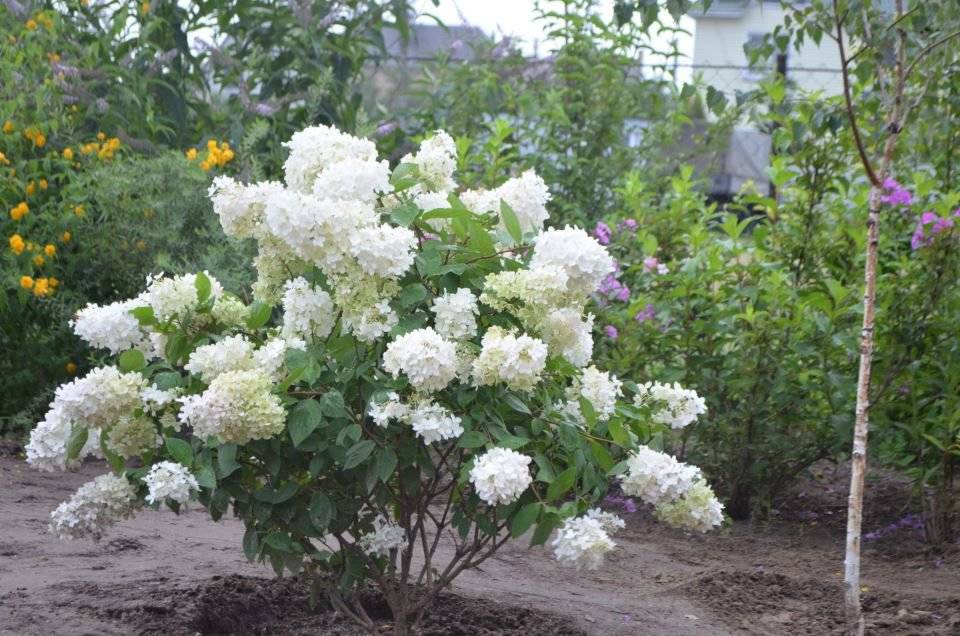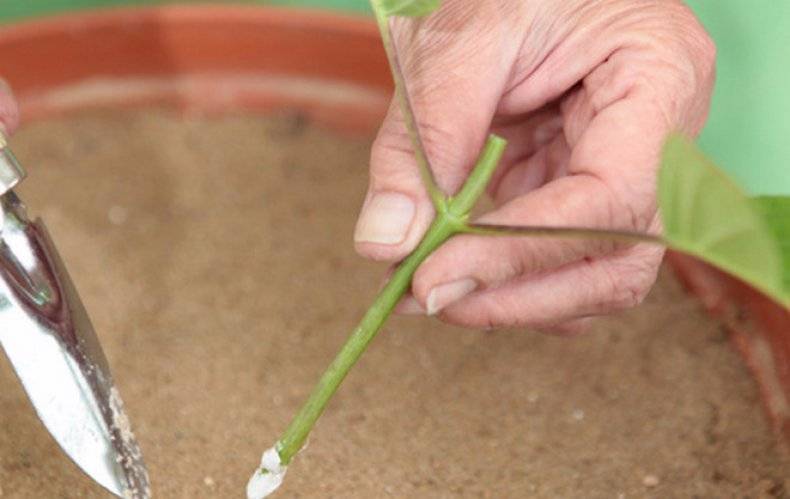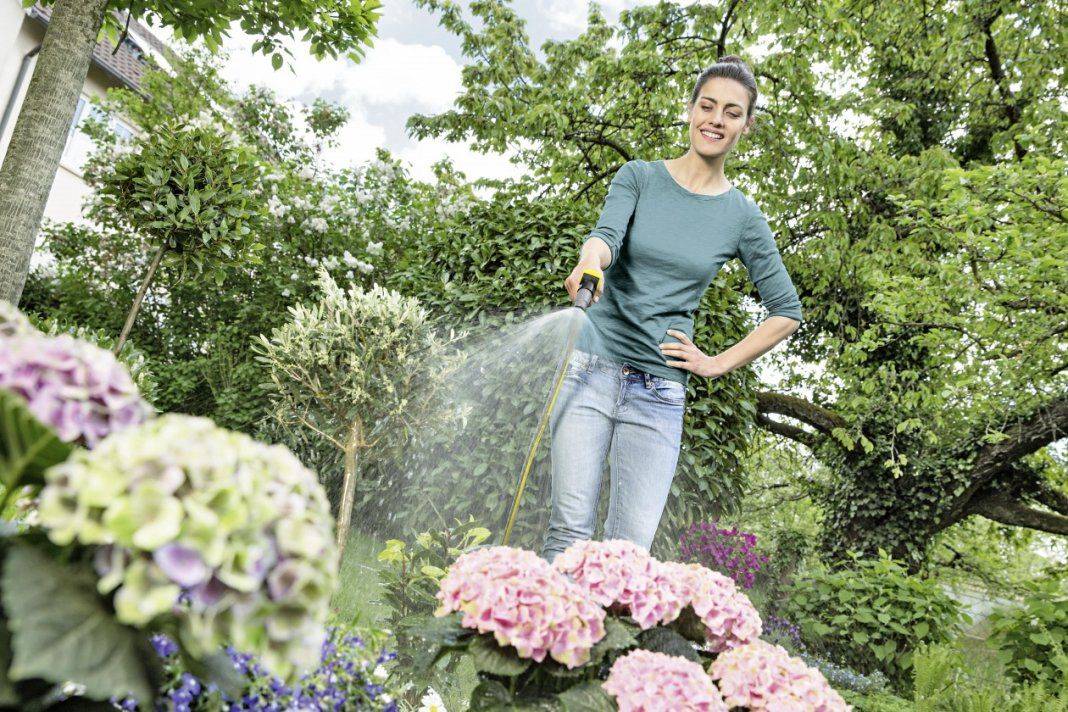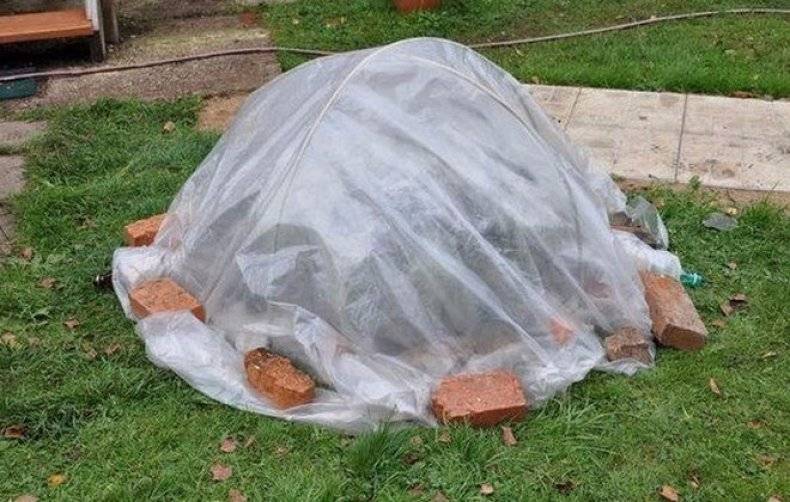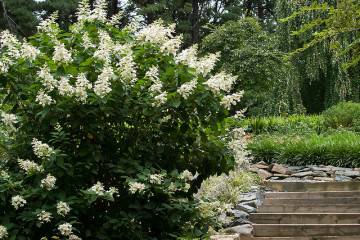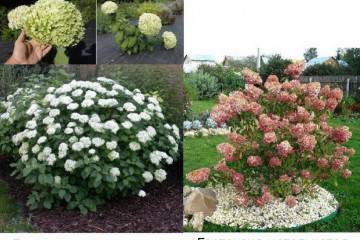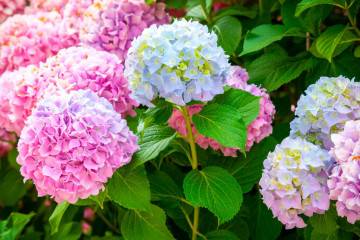Hydrangea paniculata Grandiflora (Grandiflora) - description
Content:
Hydrangea is one of the most beautiful shrubs. It is often used to decorate alleys, parks and gardens. Among the many varieties, the panicle hydrangea Grandiflora most often wins due to its spectacular flowering, which cannot leave anyone indifferent.
Hydrangea paniculata Grandiflora (Grandiflora): description and difference from tree
Hydrangea has the international scientific name Hydrangea, which in Latin means "a vessel with water". Translated from English, hydrangea Grandiflora means "large-flowered".
The origin and appearance of the hydrangea paniculata Grandiflora
This shrub is deciduous. In height it can reach 2 m, in width - 3 m. Oblong, strongly pubescent leaves can grow up to 12 cm in length. The flower begins to bloom fully only 5 years after planting, but the rudiments of this process are visible after a couple of years.
The description of the flower of the hydrangea paniculata Grandiflora is able to enchant anyone. The inflorescences consist of small flowers of a creamy white color, which over time begins to acquire a pink tint. The buds do not form fruit. The inflorescences are in the form of a pyramid, which can reach a length of up to 30 cm.
The appearance of the hydrangea Grandiflora treelike
Hydrangea Grandiflora treelike has another name - smooth hydrangea. It belongs to flowering, found on rocky mountains. Unpretentious care and bright colors of the shrub have won the hearts of many gardeners, so it is often used to decorate garden plots.
The plant can reach a height of 2 m. Large cone-shaped inflorescences can be up to 30 cm long. Flowering takes place from June to September. No fruits are formed on the bush.
Transplant after purchase in open ground
Planting and caring for the Grandiflora panicle hydrangea in the open field will not be difficult if you follow certain instructions. The recommendations are simple, but their observance is required so that the shrub is not susceptible to diseases, pests, and also does not stop blooming.
What is needed for landing
Planting is recommended in spring or autumn. The most suitable periods are from March to May and from September to October. Planting several bushes should be carried out according to certain rules: there should be a distance of at least 2.5 m between them.
It is recommended to make the substrate yourself according to the following recipe:
- 2 pieces of turf;
- 2 parts of peat;
- 1 part compost;
- 1 piece of leafy land.
The components taken in the indicated proportions should be thoroughly mixed and pine needles should be added to regulate acidity.
Choosing the best place
The right place is half the success of the landing. It is recommended to choose an area with diffused sun light. Too bright sun rays can reduce the decorative effect of the flower, but in the shade of flowering you can not wait. The soil should be fertile with neutral acidity. It is not recommended to choose a sandy substrate, as it will have to be constantly acidified.
Step-by-step planting process
Even a novice gardener can plant a plant. To do this, follow the instructions below:
- Dig a hole about half a meter in diameter and depth.
- Pour in the prepared substrate.
- Leave for a week to allow the substrate to compact naturally.
- Take the seedling out of the container, plant it in the center of the hole, without breaking the earthen clod at the root system.
- Compact the soil and sprinkle with plenty of water.
Immediately after planting, during the adaptation period, it is worth protecting the bush from the sun with the help of burlap.
Propagation of hydrangea paniculata Grandiflora
The most popular breeding methods for panicle hydrangea are cuttings and planting of seeds. The second way is longer and more labor-intensive, but each gardener chooses the most preferable one for himself.
Propagation by cuttings
Harvesting of cuttings begins in June-July. To do this, the tops of the branches are cut off and planted in the shade. Planted cuttings should be covered with jars. After that, it is necessary to regularly ventilate and water them. Once the cuttings are rooted, they can be transplanted into individual wells.
Growing from seeds
In February, the seeds must be sown in a nutritious substrate, moistened with a spray bottle, covered with foil or glass. It is worth ventilating the crops every day and moistening the soil as it dries. When shoots appear, the film or glass should be removed. Water the crops as needed. After the appearance of the second sheet, it is necessary to make a pick.
Caring for the hydrangea paniculata Grandiflora
Systematic care of the shrub will help preserve its decorative appearance for a longer period. Grooming is required in accordance with the recommendations below.
Watering mode
The variety is drought tolerant, but this does not mean that you can forget about watering it. Watering the plant is required often enough to maintain high quality inflorescences. Every week, under the bush, it is worth making 2 buckets of warm, settled water.
Depending on the weather, the frequency of watering should be adjusted. In rainy weather, it is worth watering the plant less often so that the roots do not rot from excessive moisture. In hot summer, it is necessary to increase the number of watering 2-3 times.
Top dressing
The composition of the applied dressings varies depending on the season. To grow buds and shoots, it is worth applying organic fertilizers. In order for the buds to form, you need to help the plant and fertilize the bush with a solution of ammonium nitrate, superphosphate and potassium salt.
In the summer, top dressing is needed for high-quality flowering. It is worth choosing complex fertilizers. In the fall, you need to add a solution of potassium salt and superphosphate to the soil, which will help to survive the cold.
Features of care during flowering
The flowering of the plant begins in early June and lasts until the end of September. During this period, it is recommended to carry out regular watering, apply nitrogenous fertilizers, weed and loosen the soil.
Features of care during the rest period
The dormant period occurs in hydrangeas during the cold season. At this time, the plant does not require additional care, in addition to pruning and shelter for the winter. After the end of winter, it is recommended to ventilate the plant every day, remove shelters and protect it from sunburn.
Preparing for winter
Qualitative preparation for winter will help hydrangeas survive frosts even in the Urals. In colder regions with harsh winters, it is recommended to initially plant a tree hydrangea as it is more resistant to cold. However, the paniculata can also be saved. Preparations should begin in mid-September.
It is necessary to remove all the lower leaves, apply phosphorus-potassium fertilizers to accelerate the process of lignification of the shoots. In November, a small plant can be completely covered with peat, and then covered with a film. Larger bushes should be covered with spruce branches, and then bend the shoots to the ground, securing them with staples. From above you need to cover with lutrasil. So that it does not begin to bloom from the wind, it is better to press the insulation to the ground with metal or bricks.
Caring for hydrangea Grandiflora paniculata is not difficult. Its attractive appearance makes it a favorite of most gardeners. To propagate a shrub, it is worth showing patience and perseverance when caring for cuttings or seeds.


